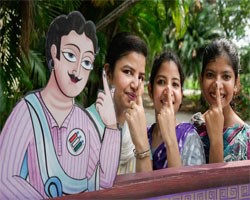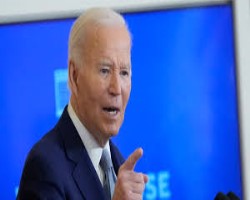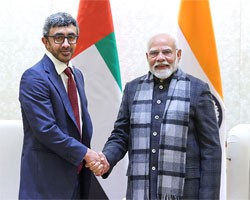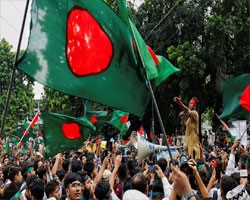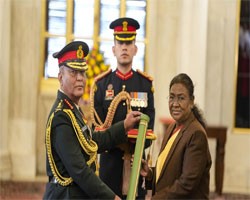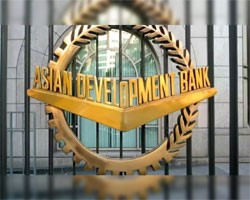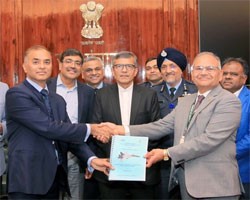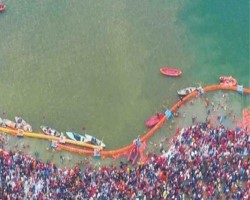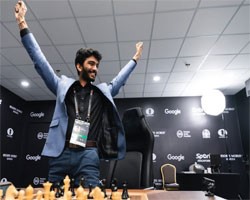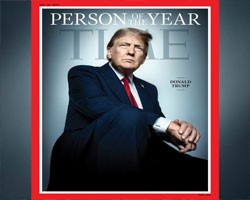UPSC Current Affairs
TABLE OF CONTENTS |
||||||||||||
| Polity and Governance | ||||||||||||
|---|---|---|---|---|---|---|---|---|---|---|---|---|
|
|
||||||||||||
|
Why in the news?
The Union Cabinet on Thursday (December 12, 2024) approved two Bills related to the implementation of simultaneous elections to the Lok Sabha and State Assemblies, paving the way to introduce the draft legislations in Parliament in the ongoing Winter Session. Key Takeaways: One of the Bills is to amend the Constitution to implement simultaneous elections while the other is to amend provisions in laws dealing with Union Territories that have Legislative Assemblies to align their terms with other Legislative Assemblies. However, if the government introduces a Bill to align local body polls or create a Single Electoral Roll through the Election Commission of India (ECI), it would require ratification by at least half of the state legislatures before being enacted. WHAT HAS THE RAM NATH KOVIND PANEL SUGGESTED? The Kovind-led panel, in its 18,626-page report, has suggested implementing the move in two stages. It has suggested simultaneous elections for the Lok Sabha and state assemblies as the first step. The next step involves synchronising elections to local bodies and municipalities with polls to Lok Sabha and states. This will be done in such a way that the local body elections are held within 100 days of the Lok Sabha polls. This will, however, require approval by not less than one-half of the states. The committee has recommended 18 constitutional amendments for One Nation One Election to become a reality. According to sources aware of the developments, the Constitution amendment Bill proposes changes to Article 83, which pertains to the duration of the Lok Sabha; Article 82, which pertains to delimitation; and Article 172, which covers the duration of State Assemblies — all as per the Kovind Committee’s report. About Simultaneous Elections: Simultaneous Elections (popularly known as One Nation, One Election) means holding elections to the House of the People, all the State Legislative Assemblies, and local bodies i.e., Municipalities and Panchayats, together Simultaneous elections do not mean that voting across the country for all elections needs to happen on a single day. In India, simultaneous elections to the Lok Sabha and Vidhan Sabhas were held in the years 1951-52, 1957, 1962 and 1967. This cycle was disrupted due to premature dissolution of State Assemblies in 1968-69 and of the Lok Sabha in 1970. What are the Advantages of One Nation, One Election? Governance and development: Frequent elections delay development programs due to the Model Code of Conduct (MCC). Frequent elections affect economic growth, investment decisions and opportunity cost of deferred economic decisions. Conducting elections to all three tiers of the Government together would avoid disruption of supply chains and production cycles due to migrant workers seeking leave of absence to cast their vote. High financial burden: Holding simultaneous elections would reduce the massive expenditure incurred for conduct of separate elections every year. Diversion of human resources: Such as security forces and other electoral officers (like Teachers) from their primary duties for significantly prolonged periods. Reducing the burden on courts: Fewer elections mean fewer election-related disputes, reducing the workload on courts. Reducing identity politics: Frequent elections use identity politics, like caste and class stirring division and disrupting societal cohesion. Voter participation: Staggered elections induce ‘voters’ fatigue’ and present a significant challenge in ensuring their participation. Challenges and complexities of simultaneous elections: Overshadowing regional issues: Conducting elections simultaneously to the Lok Sabha and all State assemblies would result in national issues overshadowing regional and State specific issues. Impact on the Regional parties: Simultaneous elections may create a system where National political parties would have a significant advantage over regional parties. Political accountability: Frequent elections hold lawmakers accountable, while fixed terms may provide unwarranted stability without performance scrutiny challenging democratic principles. Concerns Regarding Federalism: Constitutional Amendments concerning the term of the state legislative assemblies under Article 172 can be carried out without ratification by states. Thus, opinion and say of States is reduced. Logistical Issues: Organizing ONOE would require significant resources, including a vast supply of electronic voting machines and trained personnel to oversee the process. What have various Committees Recommended on ONOE? High level Committee on Simultaneous Elections: The Union Cabinet has recently approved the proposal for simultaneous elections in India, as recommended by the high-level committee led by former President Ram Nath Kovind.The Key Recommendations are- Phased Implementation: Simultaneous election in two phases- First Phase: Conduct Lok Sabha and State Assembly elections simultaneously. Second Phase: Hold local body elections (panchayats and municipalities) within 100 days of the first phase. Constitutional Amendments: The Kovind committee proposed 15 amendments to the Constitution, requiring two Constitution Amendment Bills. First Bill: Addresses the transition to a simultaneous election system and allows for fresh elections if a Lok Sabha or State Assembly is dissolved before its term ends. This bill does not require state ratification. Second Bill: Focuses on local body elections and the establishment of a Single Electoral Roll. This bill will require ratification by more than half of India's states. New Constitutional Articles: Article 82A: Proposed to facilitate the transition to simultaneous elections. Notification by the President marking the "Appointed date." All legislative assemblies formed after this date will end with the Lok Sabha's full term. Expands Parliament's power to include conducting simultaneous elections by amending Article 327. Handling Early Dissolutions: Amendments to Articles 83 and 172 clarify the terminology of "full term" and "unexpired term" for Lok Sabha and State Assemblies. Assemblies that replace dissolved ones will serve only for the unexpired term before subsequent simultaneous elections. Local Body Elections and Electoral Roll: The second Bill proposes a new Article 324A, empowering Parliament to ensure local elections occur simultaneously with general elections. A new Article 325(2) introduces a Single Electoral Roll for all elections, to be managed by the ECI, reducing the role of State Election Commissions to a consultative capacity. Logistical Considerations: The implementation of these recommendations will require extensive planning and coordination among various levels of government to ensure a seamless electoral process. Earlier Recommendations: The Law Commission Working Paper (2018): Amend the Constitution and the Representation of the People Act, 1951, to enable simultaneous elections. Modify the Anti-Defection Law to prevent stalemates in hung legislatures. Extend the six-month limit for issuing election notifications for added flexibility. Parliamentary Standing Committee on Personnel, Public Grievances, Law and Justice (2015): The 2015 report emphasized the advantages of synchronized elections for better political stability. The committee noted that implementing simultaneous elections would need extensive resources, including EVMs and VVPATs, estimated to cost around Rs 9,284.15 crore, while also highlighting significant logistical and constitutional challenges. National Commission to Review the Working of the Constitution: Their 2002 report advocates for simultaneous elections to promote continuity in governance. NITI AAYOG: The 2017 Working Paper supports simultaneous elections to streamline the electoral process and strengthen democracy. |
||||||||||||
|
|
||||||||||||
|
IN SHORT:
Holding simultaneous polls was one of the key promises of BJP Government likely to send bill to a Joint Parliamentary Committee Views of the Speakers of all state assemblies will be taken |
||||||||||||
|
|
||||||||||||
|
Why in the news?
OUTGOING US President Joe Biden said on Thursday he was pardoning 39 people convicted of non-violent crimes and commuting the sentences of nearly 1,500 others who were serving long prison terms. The pardons and clemency come over a week after the president signed an unconditional pardon for his son Hunter. This ignited discussions about the pardon power of the president in India. What is the Pardon Power of the President in India? Pardon Powers: Article 72 of the Indian Constitution gives the President of India the power to grant pardons, remit or commute sentences, grant respites or remissions of punishment, or reprieve the sentence of any person convicted of an offense in cases where: The punishment is by a Court Martial. The sentence involves capital punishment (death sentence). The conviction is for offenses under Union laws. Significance: This power ensures that the president can remedy potential judicial errors or exercise clemency in situations requiring humanitarian considerations. Limitations: The President cannot exercise this power independently. Decisions must align with the advice of the Council of Ministers. This principle was upheld by the Supreme Court (SC) of India in landmark cases such as: Maru Ram vs Union of India, 1980: The SC held that the power to grant pardons must be exercised fairly, reasonably, and without arbitrariness, ensuring justice and balance. Kehar Singh v. Union of India, 1988: The SC held that the President's pardoning power is independent of the judiciary, but it can be reviewed to ensure procedural fairness. The review focuses on adherence to constitutional principles and procedural requirements, not the merits of the decision.
Pardoning Powers of Governor of a state: The Governor of a state exercises pardoning powers under Article 161, though with limitations compared to the President's power. The Governor can pardon, reprieve, respite, remit, suspend, or commute the punishment or sentence of anyone convicted of an offence under State law. The Governor can suspend, remit, or commute a death sentence, but cannot pardon it. The President can grant pardon in cases involving a Court Martial, but Article 161 does not grant this power to the Governor. Presidential Pardon of the US: The US Constitution grants the president the power to “grant Reprieves and Pardons for Offences against the United States, except in Cases of Impeachment.” This executive power applies exclusively to federal crimes and does not extend to state-level offenses or impeachment cases. |
||||||||||||
| International Relations | ||||||||||||
|
|
||||||||||||
|
Why in the news?
Prime Minister Shri Narendra Modi received His Highness Sheikh Abdullah bin Zayed Al Nahyan, Deputy Prime Minister and Foreign Minister of the United Arab Emirates. Key Takeaways: Prime Minister conveyed his warm wishes to the President of the UAE His Highness Sheikh Mohamed bin Zayed Al Nahyan. He expressed satisfaction at the frequent high-level visits and exchanges, including the visit of the Crown Prince of Abu Dhabi His Highness Sheikh Khaled bin Mohamed bin Zayed Al Nahyan to India in September 2024, which marked a generational continuity in bilateral relations. The two leaders emphasized strengthening Comprehensive Strategic Partnership including in the areas of technology, energy, and people-to-people ties. Prime Minister laid special emphasis on the implementation of the India-Middle East-Europe Corridor (IMEEC) as a historic initiative to foster regional connectivity and prosperity. His Highness Sheikh Abdullah bin Zayed Al Nahyan shared perspective on the prevailing situation in West Asia. Prime Minister reiterated India’s commitment to support long term peace, stability and security of the region. |
||||||||||||
|
|
||||||||||||
|
Useful information for all competitive exams:
United Arab Emirates (UAE): The United Arab Emirates[c] (UAE), or simply the Emirates, is a country in West Asia, in the Middle East, at the eastern end of the Arabian Peninsula. Capital: Abu Dhabi Government: Federal Islamic semi-constitutional monarchy President: Mohamed bin Zayed Al Nahyan Prime Minister: Mohammed bin Rashid Al Maktoum Currency: UAE dirham (AED) |
||||||||||||
|
|
||||||||||||
|
Why in the news?
Bangladesh Supreme Court has stayed a High Court verdict that declared 'Joy Bangla' -- popularised by Bangbandhu Sheikh Mujibur Rahman -- as the country's national slogan. Rahman's daughter Sheikh Hasina was ousted as prime minister on August 5. Recently, the country's central bank decided to remove Rahman's image from currency notes. Key Takeaways: Following the change of government, the state moved to suspend the High Court's ruling and on December 2 filed the leave to appeal petition with the SC seeking stay on the High Court verdict of March 10, 2020. A four-member bench of the Appellate Division headed by Chief Justice Syed Refaat Ahmed on Tuesday passed the order on the ground that the national slogan is a matter of the government's policy decision and the judiciary cannot interfere in this issue. The full bench of the Appellate Division headed by Chief Justice Syed Refaat Ahmed passed the order following a leave to appeal petition filed by the government challenging the High Court judgement. "'Joy Bangla' will not be considered as the national slogan following this Appellate Division order," said Additional Attorney General Aneek R Haque, who appeared for the government during the hearing. |
||||||||||||
|
|
||||||||||||
|
IN SHORT:
Bangladesh Supreme Court has stayed a High Court verdict that declared 'Joy Bangla' -- popularised by Bangbandhu Sheikh Mujibur Rahman -- as the country's national slogan. "'Joy Bangla' will not be considered as the national slogan following this Appellate Division order," said Additional Attorney General Aneek R Haque. |
||||||||||||
|
|
||||||||||||
|
Useful information for all competitive exams:
Bangladesh: Capital: Dhaka Government: Unitary parliamentary republic under an interim government President: Mohammed Shahabuddin Chief Adviser: Muhammad Yunus Chief Justice: Syed Refaat Ahmed Currency: Taka (৳) (BDT) The border line between India and Bangladesh is known as the Radcliffe Line The border between India and Bangladesh is 4,096 kilometers long and is the fifth-longest land border in the world. The border runs through five Indian states: West Bengal, Assam, Meghalaya, Tripura, Mizoram. |
||||||||||||
|
|
||||||||||||
|
The President of India, Smt Droupadi Murmu conferred the Honorary Rank of General of the Indian Army on Suprabal Janasewashree General Ashok Raj Sigdel, Chief of the Army Staff, Nepali Army, at a special Investiture Ceremony held at Rashtrapati Bhavan today (December 12, 2024) for his commendable military prowess and immeasurable contribution to further fostering Nepal’s long and friendly association with India.
There has been a tradition of conferring the title of Honorary General on the Army chiefs of Nepal and India since 1950. |
||||||||||||
|
|
||||||||||||
|
IN SHORT:
President Murmu confers honorary Indian Army rank on Nepali Army chief General Ashok Raj Sigdel meets top Indian officials to discuss defence ties Nepali Army chief praises India's self-reliance in defence production |
||||||||||||
| Economy | ||||||||||||
|
|
||||||||||||
|
The Asian Development Bank (ADB) on Wednesday approved a $500 million loan to support India’s economic growth by promoting environmentally sustainable infrastructure.
Key Takeaways: The ADB loan, with a sovereign guarantee, to India Infrastructure Finance Company Limited (IIFCL) will advance sustainable infrastructure development. This will help IIFCL provide long-term capital for infrastructure projects focusing on connectivity and energy transition as well as under-resourced sectors like urban projects, education, and health care. IIFCL can be an anchor government investor that attracts private sector entities to join a consortium of lenders to finance these initiatives. The Financing Environmentally Sustainable Growth in Infrastructure Project will build IIFCL’s institutional capacity to integrate green and best practices into infrastructure projects. India is among the world’s most impacted economies due to climate change, and intensifying hazards—such as floods, droughts, and cyclones—require infrastructure projects designed to mitigate these risks. However, there is a lack of sufficient funding and risk-sharing mechanisms within the local financial market for these types of projects. The country is facing a $1 trillion climate financing gap that the public sector cannot meet alone. |
||||||||||||
|
|
||||||||||||
|
Useful information for all competitive exams:
Asian Development Bank (ADB): The Asian Development Bank (ADB) is a regional development bank established on 19 December 1966. Headquarters: 6 ADB Avenue, Mandaluyong, Metro Manila 1550, Philippines Region served: Indo-Pacific Membership: 69 countries President: Masatsugu Asakawa (Japan) (until February 23, 2025), Masato Kanda (Japan) |
||||||||||||
| Security | ||||||||||||
|
|
||||||||||||
|
Defence Ministry signed a contract of 13,500 crore rupees with Hindustan Aeronautics Limited (HAL) for the procurement of 12 Su-30MKL aircraft along with associated equipment.
The supply of the aircraft would enhance the operational capability of the Indian Air Force and strengthen defence preparedness of the country. It also said that the aircraft would have an indigenous content of 62.6 per cent, enhanced due to indigenisation of many components to be manufactured by Indian defence industry. About Su-30MKI fighter Jet: It is a multirole combat fighter aircraft jointly developed by the Sukhoi Design Bureau and Hindustan Aeronautics Limited (HAL) for the Indian Air Force (IAF). Based on the Su-30 fighter aircraft, Su-30MKI is equipped with thrust vectoring control and canards. Features: It is the fourth-generation fighter jet powered by two AL-31 FP aero engines. AL-31FP is a high-temperature turbojet by-pass engine of modular design. The Su-30MKI fleet of IAF was fitted with air-launched version of BrahMos supersonic cruise missiles and was successfully tested in November 2017. It is fitted with a tarang radar warning receiver (RWR) indigenously developed by the Defence Research and Development Organisation (DRDO). The aircraft has a maximum unrefuelled flight range of 3,000km. The in-flight refuelling system of Su-30MKI provides a maximum range of 8,000km with two refuellings. Manufacturer: Hindustan Aeronautics Limited (HAL) |
||||||||||||
|
|
||||||||||||
|
IN SHORT:
Defence Ministry signed a contract of 13,500 crore rupees with Hindustan Aeronautics Limited (HAL) for the procurement of 12 Su-30MKL aircraft along with associated equipment. It is the fourth-generation fighter jet powered by two AL-31 FP aero engines. AL-31FP is a high-temperature turbojet by-pass engine of modular design. The Su-30MKI fleet of IAF was fitted with air-launched version of BrahMos supersonic cruise missiles and was successfully tested in November 2017. |
||||||||||||
|
|
||||||||||||
|
Useful information for all competitive exams:
Hindustan Aeronautics Limited (HAL): Hindustan Aeronautics Limited (HAL) is an Indian public sector aerospace and defence company. Headquartered: Bengaluru (Bangalore), Karnataka, India. Chairman & MD: DK Sunil |
||||||||||||
| Culture | ||||||||||||
|
|
||||||||||||
|
Why in the news?
The Maha Kumbh Mela 2025, a sacred pilgrimage, will be held in Prayagraj from 13th January to 26th February 2025, drawing millions of pilgrims for spiritual purification, cultural celebration, and unity. The word ‘Kumbh’ comes from the root ‘kumbhak’ (the sacred pitcher of elixir of immortality). Key Facts About Kumbh Mela: It is the largest peaceful congregation of pilgrims on earth, during which participants bathe or take a dip in a sacred river. This gathering takes place at 4 different places, namely: In Haridwar, on the banks of the Ganges. In Ujjain, on the banks of Shipra. In Nashik, on the banks of Godavari (Dakshin Ganga). In Prayagraj, at the confluence of the Ganges, the Yamuna, and the mythical invisible Saraswati. Different Types of Kumbh: The Kumbh Mela is celebrated 4 times over a course of 12 years. At Haridwar and Prayagraj, Ardh-Kumbh Mela is held every 6th year. The Maha Kumbh Mela is celebrated at Prayag after 144 years (after 12 ‘Purna Kumbh Melas’). Maagh Kumbh is celebrated every year in the month of Maagh (Jan-Feb) in Prayagraj. About Maha Kumbh Mela: It isa sacred pilgrimage that is celebrated four times over a course of 12 years. Kumbh Mela, the world’s largest peaceful gathering, draws millions of pilgrims who bathe in sacred rivers seeking to purify themselves from sins and attain spiritual liberation. This sacred event rotates between four locations in India-Haridwar, Ujjain, Nashik, and Prayagraj- each situated by a holy river, from the Ganges to the Shipra, the Godavari, and the confluence of the Ganges, Yamuna, and the mythical Sarasvati in Prayagraj. Historical background The roots of the Kumbh Mela stretch back thousands of years, finding early references during the Maurya and Gupta periods (4th century BCE to 6th century CE). During the medieval period, the Kumbh Mela received patronage from various royal dynasties, including the Chola and Vijayanagar empires in the south, and the Delhi Sultanate and Mughals in the north. Even Mughal emperors such as Akbar are noted to have participated in the celebrations, illustrating a spirit of religious tolerance. British administrators observed and documented the festival, intrigued by its massive scale and the diverse congregations it drew. Figures such as British colonial administrator James Prinsepchronicled the Kumbh Mela in the 19th century, detailing its ritualistic practices, the vast congregations, and the socio-religious dynamics at play. Post-independence, the Maha Kumbh Mela gained even greater significance, symbolizing national unity and India’s rich cultural heritage. Recognized by UNESCO in 2017 as an intangible cultural heritage of humanity, the Kumbh Mela stands as a testament to the survival and evolution of ancient traditions in an era of modernization. Conclusion: The Maha Kumbh Mela in 2025 is not just a gathering; it is a journey towards the self. Beyond rituals and symbolic acts, it offers pilgrims an opportunity for inner reflection and a deeper connection with the divine. In a world often dominated by the demands of modern life, the Maha Kumbh Mela stands as a beacon of unity, purity, and enlightenment. This timeless pilgrimage serves as a powerful reminder that, despite humanity’s varied paths, we are united in essence—a shared journey towards peace, self-realization, and an enduring reverence for the sacred. |
||||||||||||
| Sports | ||||||||||||
|
|
||||||||||||
|
Why in the news?
Indian Grandmaster Gukesh Dommaraju made history by becoming the youngest-ever world champion after defeating reigning champion Ding Liren in the decisive 14th game of the World Chess Championship match in Singapore on 12 December. Key Takeaways: At just 18 years old, Gukesh also became the second Indian, after Viswanathan Anand, to claim the classical chess world championship title. Gukesh shattered the record previously held by Russian legend Garry Kasparov, who had become the youngest world chess champion at the age of 22 in 1985. World Chess Championship: The World Chess Championship is played to determine the world champion in chess. The World Chess Championship 2024, officially known as the World Chess Championship 2024 presented by Google. About Gukesh Dommaraju: Gukesh was born on 29 May 2006 in Chennai into a Tamil family. Gukesh Dommaraju, also known as Gukesh D, is an Indian chess grandmaster and the reigning World Chess Champion. He earned his grandmaster title at the age of 12 and remains the third-youngest grandmaster ever. He won one team and two individual gold medals at the 45th Chess Olympiad in 2024, as well as a bronze team medal. At the age of 18, he became the youngest Candidates Tournament winner and, subsequently, the youngest undisputed World Chess Champion, having defeated Ding Liren 7+1⁄2 to 6+1⁄2 at the World Chess Championship 2024. |
||||||||||||
|
|
||||||||||||
|
IN SHORT:
D Gukesh defeated China's Ding Liren in Game 14 on Thursday Gukesh won the match 7.5-6.5 after securing three games in Singapore Gukesh is the second Indian after Viswanathan Anand to win the world title |
||||||||||||
|
|
||||||||||||
|
Useful information for all competitive exams:
International Chess Federation (FIDE): Formation: July 20, 1924 Headquarters: Lausanne, Switzerland President: Arkady Dvorkovich Deputy President: Viswanathan Anand |
||||||||||||
| Persons in News | ||||||||||||
|
|
||||||||||||
|
Why in the news?
Time magazine has named President-elect Donald Trump as its Person of the Year for 2024, marking the second time he has received the honour. Key Takeaways: Trump was previously recognized in 2016. Last year, the title was awarded to pop icon Taylor Swift for 2023. IN SHORT: Time magazine has named President-elect Donald Trump as its Person of the Year for 2024, marking his second recognition after 2016. Last year, the title was awarded to pop icon Taylor Swift for 2023. |
||||||||||||
|
<< 12-Dec-24
|
||||||||||||
|
|
